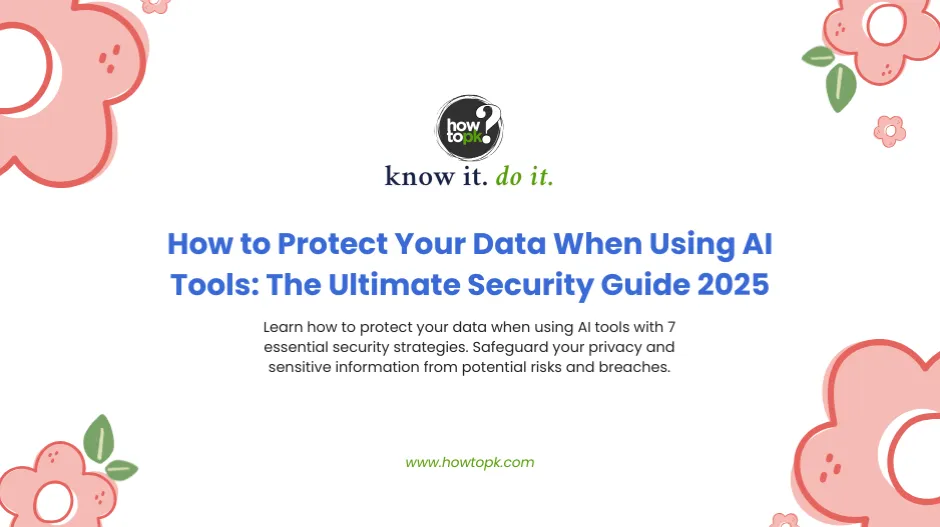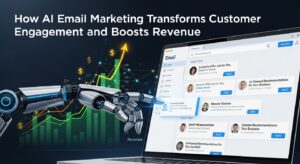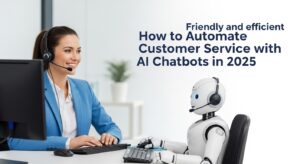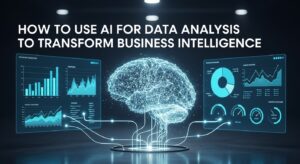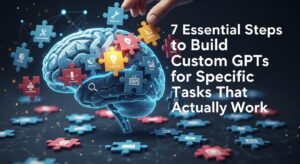The artificial intelligence revolution has transformed how we work, learn, and create. From ChatGPT to image generators, AI tools have become indispensable for millions of users worldwide. However, this convenience comes with significant privacy and security risks that most users overlook.
When you interact with AI platforms, you’re sharing potentially sensitive information that could be stored, analyzed, or even exposed to unauthorized parties. Learning how to protect your data when using AI tools isn’t just recommended, it’s absolutely critical for your digital safety.
Recent data breaches and privacy incidents involving major AI companies have highlighted the urgent need for better data protection practices. This comprehensive guide will equip you with seven essential strategies to safeguard your information while still enjoying the benefits of AI technology.
Understanding the Risks: What Happens to Your Data in AI Systems
Data Collection and Storage Practices
AI tools collect vast amounts of user data to improve their services and train their models. This data often includes:
- Conversation histories and prompts
- Uploaded files and documents
- Personal information shared in interactions
- Usage patterns and behavioral data
- IP addresses and device information
Most AI companies store this data on their servers for extended periods, sometimes indefinitely. While they claim to use encryption and security measures, data breaches remain a constant threat.
Training Data Concerns
Many AI systems use user interactions to improve their models. This means your conversations could potentially become part of the AI’s knowledge base, accessible to other users in certain circumstances. Some platforms have faced criticism for using user data without explicit consent for training purposes.
7 Essential Strategies to Protect Your Data When Using AI Tools
1. Choose Reputable AI Platforms with Strong Privacy Policies
Not all AI tools are created equal when it comes to data protection. Research platforms thoroughly before sharing sensitive information.
Key factors to evaluate:
- Transparent privacy policies
- Clear data retention policies
- Industry certifications (SOC 2, ISO 27001)
- Regular security audits
- User control over data deletion
Recommended practices:
- Read privacy policies completely
- Look for platforms that offer data portability
- Prefer services with local data processing options
- Check if the company has a history of data breaches
2. Implement Data Minimization Principles
The most effective way to protect your data when using AI tools is to share less sensitive information in the first place.
Data minimization strategies:
Information Type | Risk Level | Recommendation |
Personal names, addresses | High | Avoid or use pseudonyms |
Financial data | Very High | Never share |
Medical information | Very High | Use only HIPAA-compliant AI tools |
Work documents | Medium-High | Remove identifying information |
Creative projects | Low-Medium | Generally safe to share |
Best practices:
- Anonymize documents before uploading
- Remove metadata from files
- Use generic examples instead of real data
- Create fictional scenarios for sensitive topics
3. Master Privacy Settings and Account Controls
Most AI platforms offer privacy controls that users rarely explore. Taking time to configure these settings properly is crucial for data protection.
Essential privacy configurations:
- Disable data sharing for model training
- Turn off conversation history storage
- Limit data retention periods
- Enable two-factor authentication
- Review and revoke third-party app permissions
Regular maintenance tasks:
- Audit your privacy settings monthly
- Delete old conversations and files
- Review connected applications
- Monitor account activity logs
4. Use Temporary and Disposable Accounts
For sensitive tasks, consider using temporary accounts or disposable email addresses when registering for AI services.
Benefits of temporary accounts:
- Limited data association with your main identity
- Easier to delete and abandon if needed
- Reduced tracking across platforms
- Better compartmentalization of activities
Implementation tips:
- Use services like TempMail for registration
- Create separate accounts for different use cases
- Avoid linking to your main social media profiles
- Use VPN services for additional anonymity
5. Implement Local and Offline AI Solutions
When possible, choose AI tools that process data locally on your device rather than sending information to remote servers.
Local AI options:
- Desktop applications with offline processing
- On-device language models
- Local image processing tools
- Self-hosted AI solutions
Advantages of local processing:
- Complete control over your data
- No internet connectivity required
- Faster processing for some tasks
- Elimination of data transmission risks
Popular local AI tools include Ollama for language models and AUTOMATIC1111 for image generation.
6. Establish Secure Data Handling Workflows
Develop systematic approaches for handling sensitive information when AI assistance is necessary.
Secure workflow example:
- Pre-processing: Remove or anonymize sensitive data
- Interaction: Use the AI tool with sanitized information
- Post-processing: Review outputs for any leaked information
- Cleanup: Delete conversations and temporary files
- Documentation: Keep records of what data was shared
Data sanitization techniques:
- Replace names with placeholders (Person A, Person B)
- Use fictional company names and locations
- Remove specific dates and replace with relative terms
- Generalize numerical values where possible
7. Monitor Your Digital Footprint and Data Exposure
Regular monitoring helps you identify potential privacy issues before they become serious problems.
Monitoring strategies:
- Set up Google Alerts for your name and business
- Use data breach notification services
- Review AI platform security announcements
- Monitor credit reports for suspicious activity
- Check if your email appears in known data breaches
Tools for monitoring:
- Have I Been Pwned for breach detection
- Google Alerts for mention tracking
- Privacy-focused browsers with tracking protection
- VPN services for additional anonymity
Advanced Data Protection Techniques
Encryption and Secure Communications
For highly sensitive use cases, consider additional encryption layers:
- Use encrypted messaging apps for AI-related communications
- Encrypt files before uploading to AI platforms
- Utilize end-to-end encrypted file sharing services
- Consider homomorphic encryption for advanced scenarios
Legal Protections and Compliance
Understanding your legal rights regarding AI data usage:
Key regulations to know:
- GDPR (European Union)
- CCPA (California)
- PIPEDA (Canada)
- Industry-specific regulations (HIPAA, FERPA, etc.)
Your rights typically include:
- Right to know what data is collected
- Right to delete your data
- Right to data portability
- Right to opt-out of certain uses
Industry-Specific Considerations
Healthcare and Medical Data
Medical professionals and patients must be especially careful when using AI tools. Consider:
- HIPAA-compliant AI platforms only
- De-identification of patient data
- Consent requirements for AI assistance
- Professional liability implications
Legal and Financial Services
Legal professionals should:
- Maintain attorney-client privilege protections
- Use AI tools that offer appropriate confidentiality guarantees
- Consider professional ethics requirements
- Implement additional security measures for sensitive cases
Education and Research
Academic users should consider:
- FERPA compliance for student data
- Institutional review board requirements
- Academic integrity policies
- Intellectual property protections
Creating a Personal AI Data Protection Plan
Assessment Phase
- Inventory your AI tool usage
- Identify sensitive data types you handle
- Evaluate current privacy practices
- Assess risk tolerance levels
Implementation Phase
- Configure privacy settings across all platforms
- Establish data handling workflows
- Set up monitoring systems
- Train team members (if applicable)
Maintenance Phase
- Regular privacy setting reviews
- Stay updated on AI security news
- Periodic risk assessments
- Continuous improvement of practices
Future-Proofing Your AI Data Protection Strategy
The AI landscape evolves rapidly, and new privacy challenges emerge regularly. Stay ahead by:
- Following AI security research and publications
- Participating in privacy-focused communities
- Testing new privacy tools and techniques
- Advocating for better industry standards
Emerging trends to watch:
- Federated learning implementations
- Zero-knowledge AI systems
- Blockchain-based AI platforms
- Regulatory developments worldwide
Conclusion: Taking Control of Your AI Data Security
Learning how to protect your data when using AI tools requires ongoing effort, but the investment is worthwhile. The seven strategies outlined in this guide—from choosing reputable platforms to implementing monitoring systems—provide a comprehensive foundation for AI data protection.
Remember that perfect security doesn’t exist, but informed users who take proactive steps significantly reduce their risk exposure. Start by implementing the basic strategies and gradually adopt more advanced techniques as your comfort level grows.
The key is finding the right balance between leveraging AI’s powerful capabilities and maintaining appropriate privacy protections. By following these guidelines and staying informed about evolving threats, you can confidently use AI tools while keeping your sensitive data secure.
Take action today: Review your current AI tool usage, update your privacy settings, and begin implementing these data protection strategies. Your future self will thank you for taking these crucial steps to safeguard your digital privacy.

